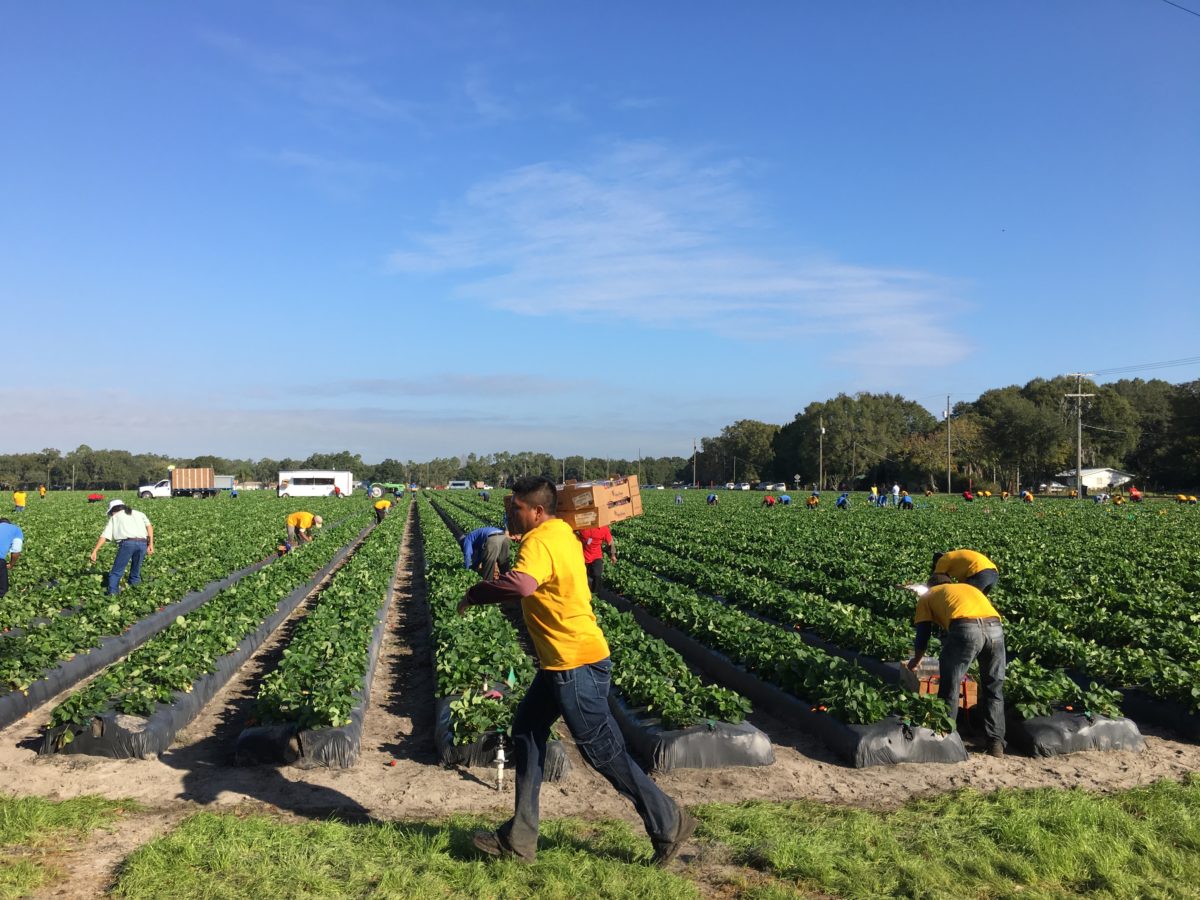By Clint Thompson Nitrogen is an element that blueberry plants require most. One University of Florida Institute of Food and Agricultural Sciences (UF/IFAS) researcher believes there is room for improvement in how growers distribute that essential element. Gerardo Nunez, assistant professor in the UF/IFAS Horticultural Sciences Department, discusses nutrient research in blueberries. “It is an element where we believe there …
Miami-Dade County Proposes Heat Standard for Outdoor Workers
The Miami-Dade County Commission unanimously passed the first reading of an ordinance last week that would create a heat standard for outdoor workers. The big picture: Miami-Dade County has an estimated 327,321 outdoor workers. The ordinance would cover the approximately 80,000 who work in agriculture and construction. The ordinance would require certain agriculture and construction employers to provide access to …
FDACS Seeks Input from Producers on Farm to School Program
Attention Florida fruit and vegetable farmers! The Florida Department of Agriculture and Consumer Services (FDACS) hopes to get your input regarding the Farm to School Initiative. As part of an effort to further develop the existing Farm to School Initiative, FDACS is conducting a survey to better understand how farmers and schools are currently working together and identify opportunities for …
Labor Forum to Feature Workshops on Heat Illness Prevention
Heat awareness and safety concerns continue to be a priority for agricultural employers and their employees. Producers can learn more about heat illness prevention during the 49th Annual Agricultural Labor Relations Forum, scheduled for Sept. 6-8, 2023 at the Wyndham Grand Orlando Resort Bonnet Creek. Attendees will learn of the hazards associated with heat illness, resources for employers, compliance and …
New Chair: Mathews Paret to Lead UF Plant Pathology
Mathews Paret, professor in the University of Florida Institute of Food and Agricultural Sciences (UF/IFAS) plant pathology department, will step into the role of department chair starting Sept. 15, 2023. Paret will lead the department of more than 30 faculty members based on the University of Florida’s Gainesville campus and at research and education centers around the state. Plant pathologists …
Agenda Finalized for Next Month’s Expo
By Clint Thompson The agenda is finalized for next month’s Citrus and Specialty Crop Expo. The two-day event, scheduled for Aug. 16-17 at the Florida State Fairgrounds in Tampa, Florida, will feature seminar topics tailoring to citrus and specialty crop producers. Topics like Best Management Practices, thrips management, plant growth regulators and optimizing irrigation practices will be featured during sessions …
Central Florida Event to Help Farmers Navigate Regulations
Farms are businesses, and producers have the double challenge of following a host of complex rules and regulations while also trying to turn a profit. That’s why the University of Florida is hosting the inaugural Growing Together: Central Florida Partners for Agriculture Symposium on Thursday, July 27 from 9 a.m. to 3 p.m. at the University of Florida Institute of …
Minimal Crop Expected in Cold-Hardy Citrus Region
By Clint Thompson Citrus harvests are just a few months away for growers in the cold-hardy citrus region of eastern Alabama, southern Georgia and the Florida Panhandle. Unfortunately, those harvests will be reduced to about 25% of the normal crop, according to industry leaders. The Christmas freeze event devastated this year’s crop in the region. Kim Jones, who grows and …
From Start to Finish: Chilli Thrips Remain a Season-Long Concern for Florida Strawberry Growers
By Clint Thompson Strawberry planting season is just around the corner for South Florida producers. One part of production that growers will have to be ready for is managing chilli thrips. Sriyanka Lahiri, University of Florida Institute of Food and Agricultural Sciences (UF/IFAS) assistant professor of entomology and nematology at the Gulf Coast Research and Education Center, discussed chilli thrips …
Nominations for Florida Ag Hall of Fame Due Sept. 1
TAMPA, Fla. – The Florida Agricultural Hall of Fame, which honors producers, commodity leaders, educators, scientists and others who have contributed to agriculture in the Sunshine State, is accepting nominations for its class of 2024 inductees. There are two ways to nominate: Nominations and supporting materials must be submitted electronically no later than Sept. 1. “The Hall of Fame celebrates …










